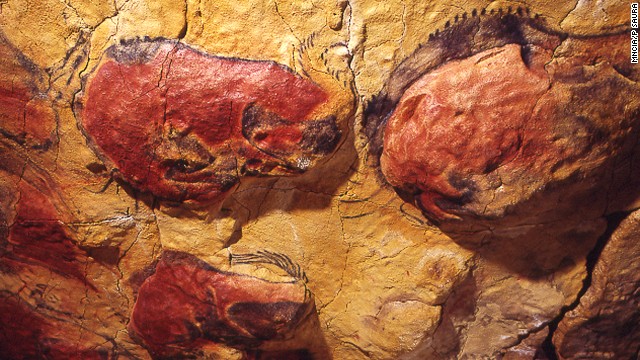

Looking for the truth, Sautuola spent the rest of his life fighting to prove that those paintings were real, trying to restore his innocence from the accusations of falsehood launched against him. The 270-meter cave is home to the some of the. Trying to expose their discovery to the academic world so that they could study the paintings, Sautuola incurred the scepticism and discredit of all experts, who claimed that the caves were false and the paintings made by Sautuola himself, in an effort to get rich. Relive the discovery of Altamira Cave in Cantabria, Spain through its discoverer, Marcelino Sanz de Sautuola.

The earliest paintings were applied during the Upper Paleolithic, around 36,000 years ago. It is renowned for prehistoric parietal cave art featuring charcoal drawings and polychrome paintings of contemporary local fauna and human hands. ' The cave of Altamira in Spain has a painting of a bison colored with red ochre that dates to between 15, 000 and 16, 500 BC. Its paintings, along with those of Lascaux and the Cave of Altamira, have been dubbed a ' prehistoric Sistine Chapel. They used such structures as the Vulture Stone at Göbekli Tepe, the animal symbols at Neolithic Çatalhöyük, and Palaeolithic cave art at multiple locations throughout Europe. The Cave of Altamira is located near the historic town of Santillana del Mar. The Cave of Altamira, famed for the prehistoric paintings found inside, is about 10 kilometers northwest of the city. Marcelino Sanz de Sautuola y de la Pedrueca, in 1868, accidentally discovered Paleolithic paintings with the help of a hunter named Modesto Cubillas inside Altamira's caves, located in Cantabria, northern Spain. Lascaux in France and Altamira in Spain are but two examples of an ever growing list of caves where explorers have chanced across stunning depictions of. The death of the author (or, more accurately, author-as-imaginary-construct) is the primary concern of Roland Emmerich’s most personal and artful film, his Shakespeare-conspiracy-theory melodrama Anonymous, in which art overwhelms and obscures the circumstances of its creation. Altamira, northern Spain circa 14,000 BC Göbekli Tepe, southern Turkey circa 10,000 BC Çatalhöyük, southern Turkey circa 7000 BC.


 0 kommentar(er)
0 kommentar(er)
